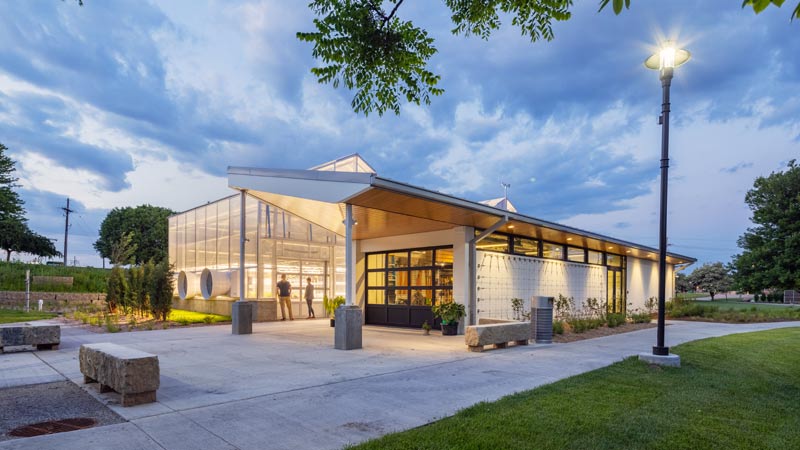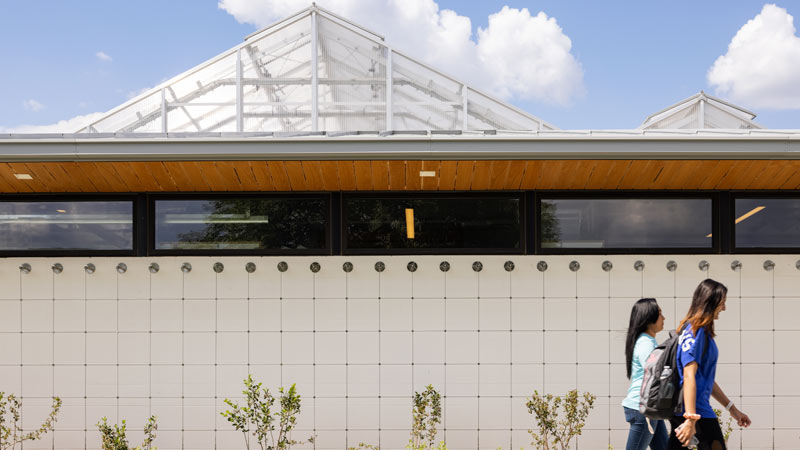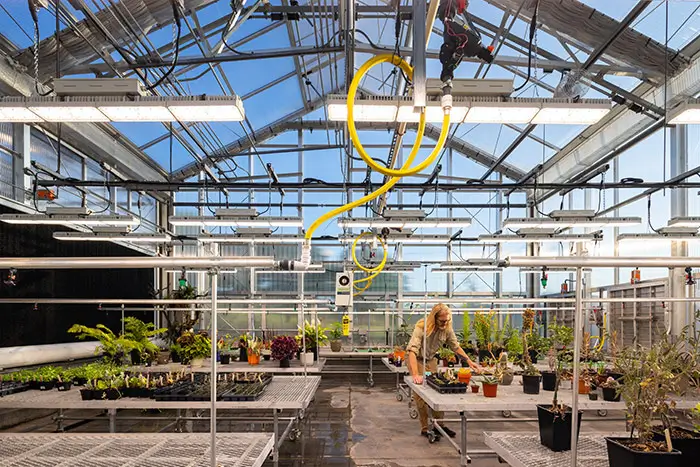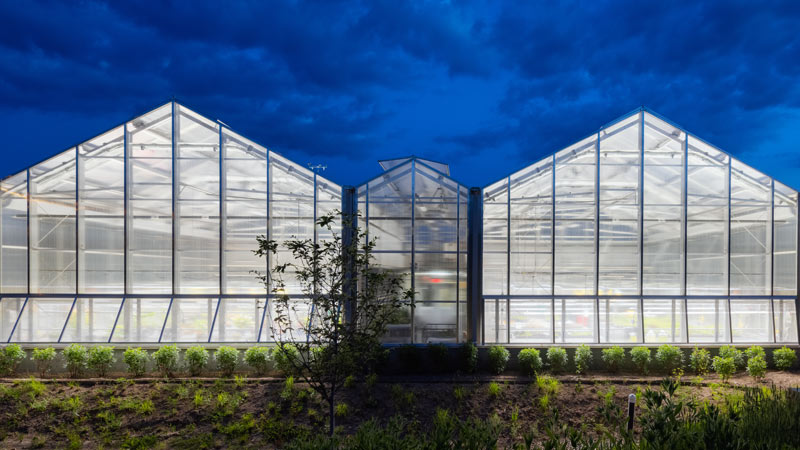Sustainability Lab
The Sustainability Lab is located on the main Bellevue University campus, to the north of the R. Joe Dennis Learning Center (see area map).

Contributing to a Sustainable Future
Bellevue University students and campus visitors can learn about sustainability management practices in a 7,000 square foot sustainability learning lab and multi-purpose greenhouse designed to house education and research activities. The facilities provide opportunities for hands-on and virtual learning.
Sustainable Features and Practices
The new lab highlights include:
- Roof panels that convert sunlight and wind into usable electric power.
- Rainwater harvesting for crop irrigation, controlling run-off and soil erosion.
- Multiple plant varieties that support native ecosystems.
- Outdoor interpretive areas, including a native plant hillside, where students and classes can gather, observe, learn and exchange ideas.

State-of-the-Art Greenhouse
The greenhouse adjoining the sustainability lab features:
- Advanced design for teaching sustainability management and conducting sustainability research projects.
- Temperate and tropical climate zones so students can grow and study a variety of plants.
- Programmable LED lighting, temperature, watering and fertilization.
- Aquaponic/hydroponic tanks that allow plants and fish to grow together.

Outside Biofuel Algae Pond
Located next to the greenhouse and lab is a pond reserved for studying algae byproducts. The pond allows faculty and students to:
- Grow algae or microscopic aquatic plant life, to capture sunlight energy.
- Harvest algae and extract energy as usable biofuel.
- Provide a cleaner, renewable alternative to greenhouse gas-producing fossil fuels.

The Bellevue University Sustainability Lab and Greenhouse are possible thanks to generous grants from the Council of Independent Nebraska Colleges Foundation (CINCF). Support for the labs has come from the Nebraska Environmental Trust (NET) and the Nebraska Statewide Arboretum.









